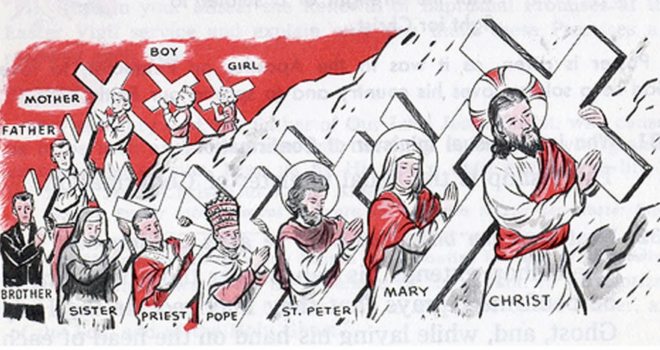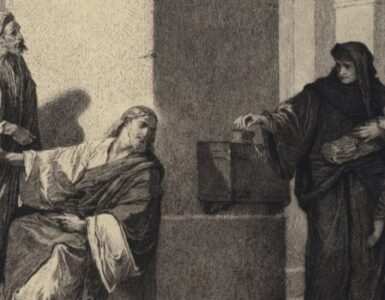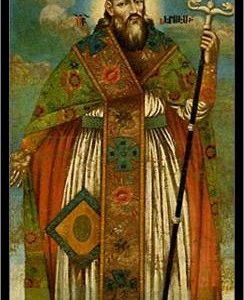Who made you? God made me. Why did God make you? God made me to love, know, and serve Him in this life and be happy with Him in the next.
Virtually every catholic prior to 1960 knew the answers to these fundamental questions about their Catholic faith. They could tell you about sin, grace, Mass obligation, confession, worthy reception of Holy Communion, and various other aspects of the faith. All of these topics (and several others) were presented to young Catholics in The Baltimore Catechism, The New Saint Joseph Edition, published 60 years ago in 1964. The question-answer format; interesting pictures; straight-to-the-point information has set this particular catechism apart from other catechetical resources in the last hundred years.

If you were to ask many Catholics today who God is and why He made us, you may get varying responses – or perhaps none at all. The general catechesis among catholics in the United States in recent generations has dwindled at an alarming rate. Catholics are leaving the Church, and many of them have never been presented with the fullness of the faith.
At the most recent World Youth Day, Bishop Robert Barron highlighted this alarming decline in catechesis:
“The Catholic faith is, in some ways, declining in the West…Young people don’t want an uncertain trumpet; they don’t want a vacillating message. They want something clear, and when they get it, they respond to it…My generation ‘dumbed-down’ Catholicism, and that has been a pastoral disaster.”
The Catholic faith has been dumbed down. And this has led to a pastoral disaster. Bishop Barron rightly describes the general decline in formation among catholics in the United States. After the Second Vatican Council, the teaching methods within parishes swiftly changed, even though the Council never called for such changes. The Baltimore Catechism was replaced by alternate resources that have not sufficiently handed on the faith to recent generations.
Why the change in resources? The complaint that I often hear about The Baltimore Catechism is: “It would only teach rote memorization of facts, not applying the faith to daily living.” Rote memorization is precisely the point for young children! This is why students use flashcards in school; diligently write down their spelling words daily; complete countless worksheets for virtually every subject. While spelling, grammar, and long division are important, I might suggest that, for catholics, knowledge of the faith is exponentially more important.
Rote memorization is especially suited for 3rd through 5th grade students. This stage of learning – the Grammar stage – is unique for children, as their minds are especially adept for memorization. It is during these early years that children soak up an incredible amount of information. As they get older, they can then more effectively apply these fundamental tools. The Catholic Church in the United States recognized the need to provide a clear, and erudite catechism during the early stages of our country.
In the early 19th century, thousands of Catholics were migrating to the United States. These immigrants were entering a largely protestant country that was often hostile toward their new catholics neighbors. The bishops of the United States acknowledged a need for a catechism that could clearly teach the faith to catholics of various ages, ethnicities, and educational backgrounds. The Baltimore Catechism was developed during the Third Plenary Council of Baltimore, which took place in 1884. It was officially issued one year later in 1885.
In 1964, The New Saint Joseph Edition was printed for various ages, and featured all new illustrations to visually assist young readers. It was dedicated to Saint Joseph, who was (as the books states), “the Foster Father of Jesus, the First Teacher of these truths.” The wonderful new images were unique, interesting, informative, and direct. Children and teenagers could easily understand all aspects of the faith using clear content and visual examples. Each lesson was also punctuated with passages from sacred Scripture, so as to make young readers more familiar with the biblical reasons for the faith. In his introduction to the catechism, Passionist Father Bennet Kelley explains:
“[This is] a new approach to the Baltimore Catechism. Its aim is to take the main point of each lesson and to show how that is illustrated or exemplified in some event in sacred Scripture. The concrete picture language of the Bible will be a big help to the child to understand better the main truths presented in the more abstract language of the questions and answers of the official Baltimore Catechism.”

By my estimation, The Baltimore Catechism, Saint Joseph Edition, is the greatest catechism resource printed in the last sixty years. If you are preparing children to receive the Sacraments, I would highly recommend purchasing a copy for them. If you are a faith formation director, I would highly recommend purchasing copies for your parish families. There are four levels of the catechism that teach similar content that is presented in an age-appropriate way:
First Communion Catechism #0: Appropriate for young children (Pre-school).
Baltimore Catechism #1: Appropriate for elementary students (Grades 1-5).
Baltimore Catechism #2: Appropriate for middle school (Grades 6-8).
Baltimore Catechism #3: Appropriate for high school (Grades 9-12).
Baltimore Catechism #4: Advanced text book
My wife and I use these books with our own children who absolutely love them. The colorful and interesting retro pictures ignite interesting conversation. The question-answer summaries at the end of each lesson create a challenge that kids respond to with excitement. As a parent, you yourself will learn the faith in an entirely new way. You will notice your children asking thought-provoking questions that begin to strengthen their relationship with God.
May God bless His people, their faith, and may He give us the strength, and the means to “give an answer to everyone who asks us for the hope that is within us” (1 Peter 3:15).
Images: The Baltimore Catechism












